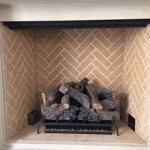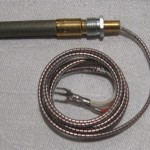Ideas for Painting a Stone Fireplace
A stone fireplace often serves as a focal point in a living room, adding warmth and character to the space. However, an outdated or mismatched stone fireplace can detract from the overall aesthetic. Painting a stone fireplace offers an effective and relatively inexpensive way to modernize or personalize its appearance. Careful planning, proper preparation, and the selection of appropriate paints are crucial for achieving a lasting and visually appealing result. This article explores a range of ideas for painting a stone fireplace, providing guidance on how to transform this prominent feature in your home.
Understanding the Stone and Selecting the Right Paint
The type of stone used in the fireplace significantly influences the painting process and the choice of paint. Common types include fieldstone, river rock, brick (often integrated into stone fireplace designs), and manufactured stone veneer. Each material possesses unique porosity and texture characteristics, impacting paint adhesion and the final appearance. Fieldstone, for example, tends to be highly porous, requiring a primer specifically designed for porous surfaces. River rock, with its smooth, rounded surface, might present adhesion challenges, necessitating a bonding primer. Manufactured stone veneer, often less porous than natural stone, may require a different approach altogether.
Selecting the appropriate paint is equally critical. Acrylic latex paint, known for its durability, ease of application, and water-based cleanup, is generally recommended for stone fireplaces. It offers good color retention and resists cracking or peeling, crucial characteristics for a fireplace where temperature fluctuations are common. However, ensure that the paint is suitable for masonry surfaces. Consider a paint with a matte or eggshell finish to avoid an overly glossy appearance that can appear artificial on stone. Avoid using oil-based paints, as they can yellow over time and may not adhere as well to porous stone.
Before committing to a specific paint color, it is highly advisable to test a small, inconspicuous area of the fireplace. This allows assessing the paint's adhesion, color accuracy, and overall appearance against the stone. Observe the test area over several days to ensure the paint dries properly and that the chosen color complements the surrounding décor. Small sample pots of paint are readily available from most paint retailers for this purpose.
Preparation is Key: Cleaning and Priming the Stone
Proper preparation is paramount to achieving a successful and long-lasting paint job on a stone fireplace. Neglecting this step can lead to poor paint adhesion, uneven coverage, and premature peeling or chipping. The first step is thorough cleaning. Remove any loose debris, dust, soot, or cobwebs from the stone surface using a stiff-bristled brush and a vacuum cleaner with a brush attachment. For stubborn stains or soot buildup, use a solution of mild detergent and water, scrubbing the affected areas with a scrub brush. Rinse thoroughly with clean water and allow the stone to dry completely before proceeding.
Once the fireplace is clean and dry, priming is essential. Primer serves several important functions: it seals the porous stone, creating a uniform surface for paint adhesion; it blocks stains from bleeding through the paint; and it enhances the paint's overall durability. Choose a primer specifically designed for masonry surfaces. A bonding primer is often recommended for smooth or less porous stones like river rock. Apply the primer evenly using a brush, roller, or paint sprayer, ensuring that all crevices and irregularities in the stone are covered. Allow the primer to dry completely according to the manufacturer's instructions, typically 24-48 hours, before applying the paint.
Protect the surrounding area before beginning the painting process. Cover the floor around the fireplace with drop cloths to prevent paint splatters. Mask off any areas that you do not want to paint, such as the fireplace insert, mantel, or adjacent walls, using painter's tape. This will ensure clean lines and a professional-looking finish.
Color Palette and Painting Techniques
The choice of color significantly impacts the overall aesthetic of the painted stone fireplace. Lighter colors, such as white, off-white, or light gray, can brighten a room and create a more modern and airy feel. These colors tend to make the fireplace appear larger and less imposing. Darker colors, such as charcoal gray, black, or deep brown, can add drama and sophistication to a space. These colors can also help to visually ground the fireplace and make it appear more substantial.
Consider the existing décor and architectural style of the room when selecting a paint color. A traditional or rustic room might benefit from warmer, earth-toned colors, while a contemporary room might be better suited to cooler, more neutral shades. The color of the surrounding walls, furniture, and accessories should also be taken into account to ensure a cohesive and harmonious design.
Various painting techniques can be employed to achieve different visual effects. To maintain the natural texture of the stone, apply the paint in thin, even coats using a brush or roller, working the paint into the crevices and irregularities of the stone. Avoid applying the paint too thickly, as this can obscure the texture and create an unnatural appearance. Dry brushing is another technique that can be used to enhance the texture of the stone. This involves applying a small amount of paint to a dry brush and lightly brushing it across the surface of the stone, leaving some areas unpainted. This technique gives the stone a weathered, aged look.
For a more uniform and modern appearance, consider using a paint sprayer. A paint sprayer provides even coverage and can reach into tight spaces that are difficult to access with a brush or roller. However, proper safety precautions should be taken when using a paint sprayer, including wearing a respirator mask and eye protection. Multiple thin coats are generally preferable to one thick coat when using a paint sprayer.
After the first coat of paint has dried completely, inspect the surface for any imperfections, such as missed spots or uneven coverage. Apply a second coat of paint, using the same technique as the first coat, to ensure a uniform and durable finish. Allow the second coat to dry completely before removing the painter's tape and drop cloths. Once the paint is fully dry, carefully inspect the finished fireplace and touch up any areas as needed.

How To Paint A Stone Or Brick Fireplace Easy Diy Building Bluebird

Diy Painted Stone Fireplace Refresh Live Edge Mantle Lemon Thistle
How To Paint A Stone Fireplace Painting Guide Brick Anew

Creative 25 Best Ideas About Painted Stone Fireplace On Brick Fireplaces Remodel

I Can T Stand My Ugly Stone Fireplace What Do Laurel Home

How To Paint A Stone Or Brick Fireplace Easy Diy Building Bluebird

Painted Stone Fireplace Makeover The Little By Home

How To Paint A Stone Fireplace

Painted Stone Fireplace Makeover The Little By Home

See How I Made Over An Ugly Clunky Stone Veneer Fireplace With Paint
Related Posts








